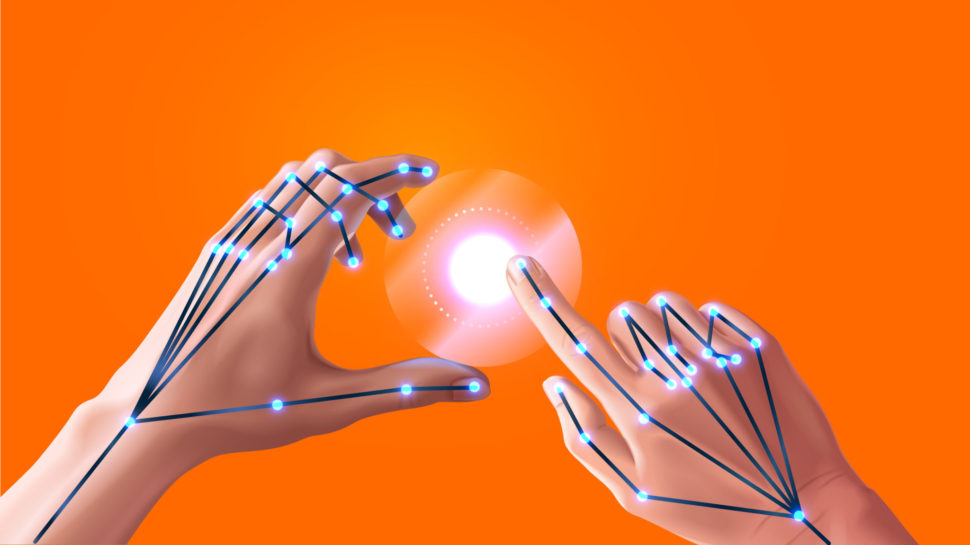An accessory in the form of an armband brings haptic feedback to make VR experiences more “real”. This wearable’s applications also extend to social haptic communication.
Currently, virtual reality technology is based on optics and acoustics to create the illusion of reality.
However, the inability of VR to mimic other human senses, like touch, doesn’t make for an easy suspension of disbelief and takes away from the immersion of the VR experience.
No matter how sleek your VR headset is, or its high-quality images and sound rendition, the experience will remain less immersive.
We can’t do without the sense of touch to apprehend reality in our daily life, as touching an object reveals useful information and provides different sensations.
Researchers are working to take VR experiences beyond sight and hearing.
Haptic Armband for an Extra Layer of Reality for VR
Heather Culbertson, an assistant professor in computer science at the University of Southern California (USC) is introducing VR haptics that would allow users to touch and interact with virtual objects.
As the head of the HaRVI Lab (Haptics Robotics and Virtual Interaction), Culbertson and her team have designed an armband that enables the wearer to receive haptic feedback from VR settings.
Read More: Walmart Considering Introducing VR Shopping to Their Stores
To simulate real touch sensations, such as texture, relief, and pressure, and create this “haptic illusion”, the fabric of Culbertson’s device is embedded with tiny speaker actuators that vibrate up and down. To synchronize the movement, an algorithm takes care of timing.
Culbertson presented the concept of her haptic armband in a paper at the 2018 IEEE Haptics Symposium, held last March in San Francisco, CA.
“This paper presents a device for creating a continuous lateral motion on the arm to mimic a subset of the gestures used in social touch. The device is composed of a linear array of voice coil actuators that is embedded in a fabric sleeve. The voice coils are controlled to sequentially press into the user’s arm to create the sensation of linear travel up the arm.”
Social Haptics, for Humans and Robots Alike
Other than VR, this wearable haptic interface could also prove to be very useful for people in real life, like for example those visually-impaired, or suffering from anxiety or isolation, and of course social robots.
These are some of the applications Culbertson thought of when developing her textile haptic sleeve, which she wants it to be a social communication tool.
After social haptics has been explored for humans, the communication of emotions through artificial haptics is a growing field within robotics.
“I’m interested in the social side of robotics, specifically how people use touch to communicate and gather information about the world around them… We convey so much information through touch. But now we’re spending more and more of our time online, we’re losing that sense of connectedness. Shopping or talking to friends and family online are experiences currently limited to your visual and auditory senses. My dream is to create virtual sensations of touch that are indistinct from what you feel in the real world,” said Culbertson.


















Comments (0)
Most Recent